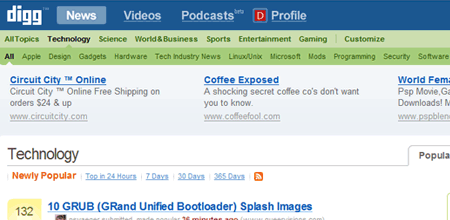
Down a rambling residential road on the outskirts of Sebastopol, the dream house sits like a testament to discriminating taste.
This dream house is the love child of artist-builder Jay Shafer, who lovingly hand-crafted it. The stainless-steel kitchen, gleaming next to the natural wood interior, is outfitted with customized storage and built-ins. From his bed, Shafer can gaze into the Northern California sky through a cathedral window. In his immaculate office space, a laptop sits alongside rows of architectural books and magazines -- many featuring his house on the cover. And from the old-fashioned front porch, he can look out on a breathtaking setting: an apple orchard in full bloom.

But in an era when bigger is taken as a synonym for better, calling Shafer's home a dream house might strike some as an oxymoron. Why? The entire house, including sleeping loft, measures only 96 square feet -- smaller than many people's bathrooms. But Jay Shafer's dream isn't of a lifestyle writ large but of one carefully created and then writ tiny.

Shafer, the founder of Tumbleweed Tiny Houses, began his love affair with diminutive dwellings about 10 years ago when teaching drawing at the University of Iowa in Iowa City. "I was living in an average-sized apartment and I realized I just didn't need so much space," he said. "I always envied people who had smaller homes, because they didn't have to do as much housework."
He bought an Airstream trailer, remodeled it and spent two years suffering the long, bitter winters before conceding that insulation was one amenity he was unwilling to forgo. "So I started from scratch and built myself a small house," he told me. He built the 100-square-foot home on wheels and parked it on a friend's farm outside of Iowa City. Eventually, he moved back into town but not without some difficulty. "I wasn't allowed to put the house on a city lot, because it was too small," he explained, referring to the minimum-size standards in the codes of many cities and counties across the country. So he bought a house, put his little house in the backyard and rented out the main house.
By 2000, he had decided this would be a way to channel his artwork, feed his hunger for simplicity and escape the rental rat race. After a friend asked him to build a house for him to live in, Shafer launched Tumbleweed Tiny House Co. in 2000. The friend went on to become the president of the Small House Society -- and thus was written one more episode of the small-is-beautiful movement. Shafer began building and designing little houses for people who wanted them as backyard retreats, second homes or primary residences. Eventually, he sold his own first home because he wanted something smaller and then built himself a 70-square-foot home on wheels (now called the XS House on his Web site).
"I knew I was going to be traveling out here and didn't know where I was going to put my house," he explained. "I wanted for it to fit in a parking place -- actually, I wanted to be able to parallel-park it."
I'd heard of getting a car small enough to parallel-park -- but a house?

Shafer pulled his house out West on a U-Haul and parked it in a public lot smack in the center of Sebastopol, hoping he would meet people sympathetic to the pursuit of the simple life and invite him to live on their property. It took exactly 20 minutes. For the next six months, Shafer lived on 40 acres of land with a creek outside the upscale town of Occidental. He then moved closer to Sebastopol, before selling his home to build his current one -- which he dragged to its current location in an apple orchard.
Over the years, he has built and sold 10 homes and dozens of house plans, which cost about $1,000. But the real story is that he's become a poster boy for simple living, with interviews or mentions in This Old House magazine, the New York Times, USA Today, the Wall Street Journal, the Los Angeles Times and, last February, even on "Oprah." What's behind the rush to peek inside Shafer's tiny living room and grill him about his lifestyle?
"Our society's been based on excess for so long, it's still a somewhat novel idea to live simply," he said. At 42, Shafer has a quiet, boyish presence and the unclouded brow of a man content with his choices. But he's also someone who obviously has gone to great lengths to live life according to his own principles -- an intensity seems to flicker in his eyes and in the humility of his explanations. You won't find much in the way of ranting about greed and gluttony. Though he does sometimes utter words like "excess," he maintains it's not for him to judge the needs of others.
"I can't say what the definition of a small house is," he said. "Maybe it's 4,000 square feet, if that's what it takes to suit their needs. The idea is that the house is being well-used. Some people need more space than others." Even when asked about the likes of Larry Ellison (whose recent building plans involve battling for a house bigger than a city block), Shafer resisted: "I don't know his needs."
Shafer said that small-house fans tend to be a nonjudgmental lot because so many have experienced "discrimination": Most building codes across the nation maintain a minimum-size requirement that prohibits the building of very small houses like Shafer's. Some homeowners associations and towns maintain this high standard in order to maintain high property values -- as well as keep out the affordable-housing riffraff. This has meant that many tiny-house aficionados only live their dream by skirting the law, living in someone else's backyard or heading for a rural county with no planning department.

But even in counties where tiny houses are allowed, lenders don't always look kindly on homes the size of a walk-in closet. Indeed, Shafer knows that some people might even see his house as a threat to their property values: That was an argument he heard often from his father, who recently sold his 4,000-square-foot suburban home in Mission Viejo to move into an RV. Now, Shafer thinks his father may be coming around to understanding the inherent beauty of living small.
Shafer chose Sebastopol in part because he thinks the politically liberal community will be supportive of abolishing minimum-size standards. His next dream is to create a little community of small houses, with a half-dozen or more connected by walking paths on a small piece of land.
"Trailer parks get a bad rap because they are made of cheap materials, but their structure is very conducive to community," he said. "Everyone knows high density is the way to go." Indeed, the tiny house may be the antidote to vertical high density in small towns and rural areas where neighborhoods are eager to preserve views and open space. Unlike in a three-story, lot-covering, mixed-use development, from a cluster of tiny houses, you can still smell the apple blossoms.
http://sfgate.com/cgi-bin/article.cgi?f=/gate/archive/2007/04/27/carollloyd.DTL














































